Case Study: The Bongo Antelope
Combining scientific illustration, diagrams, graphic design, and sculpture to create an interactive exhibit
My thesis project from the University of Georgia focused on the Bongo Spiral-Horned Antelope habitat, phylogeny, anatomy, threats, and conservation. My three-part exhibit included two infographics and one life-size Bongo head model and mount. I used Graphite, Adobe Photoshop, and Adobe Illustrator to create the 24x36 inch infographic posters, and ceramics, acrylic paint, wire, paper maché, wood, and artificial hair for the 14x24x28 inch head mount. The exhibit hung in the Lamar Dodd Bridge Gallery in Athens, Georgia from May 2nd to May 9th, 2019.
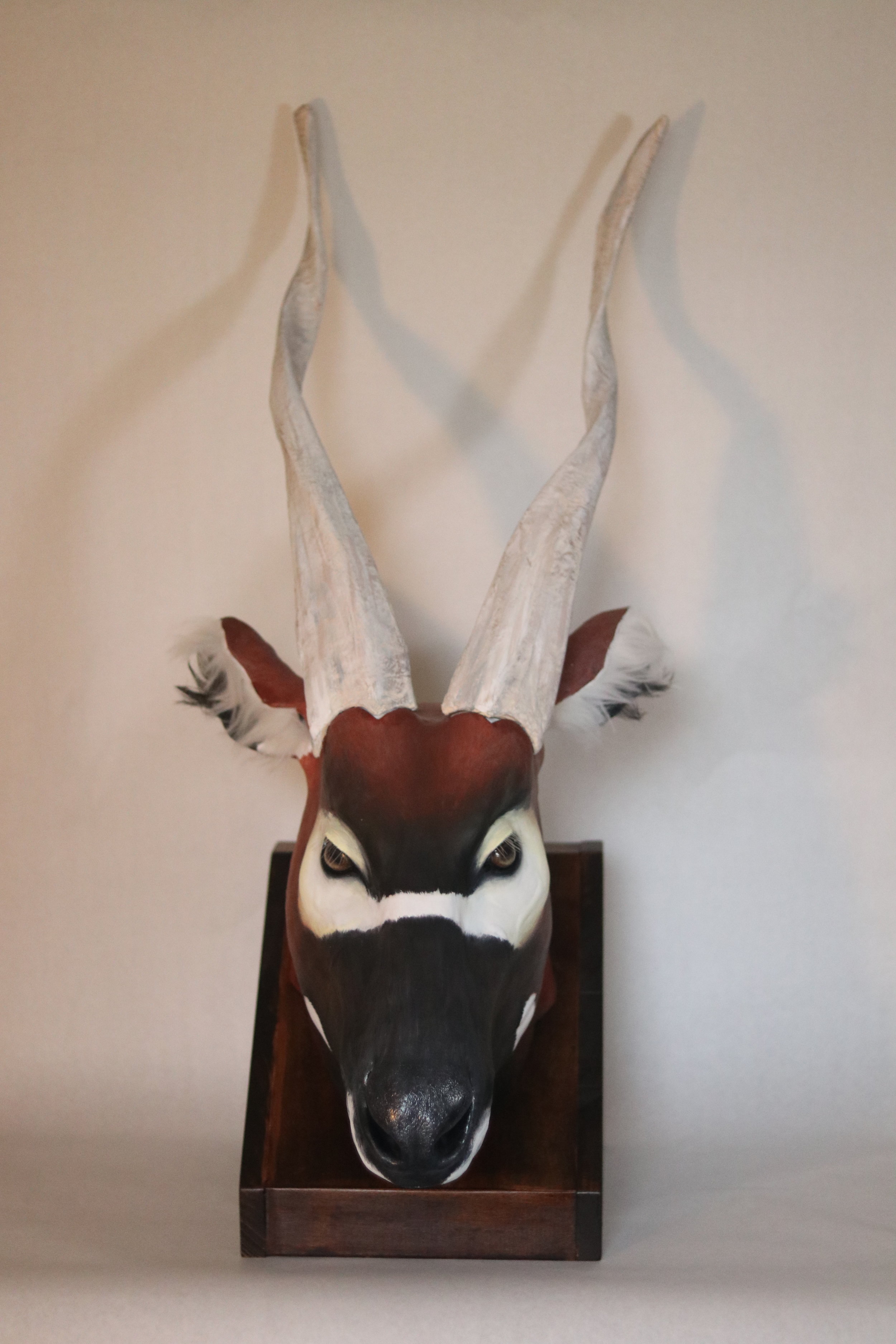
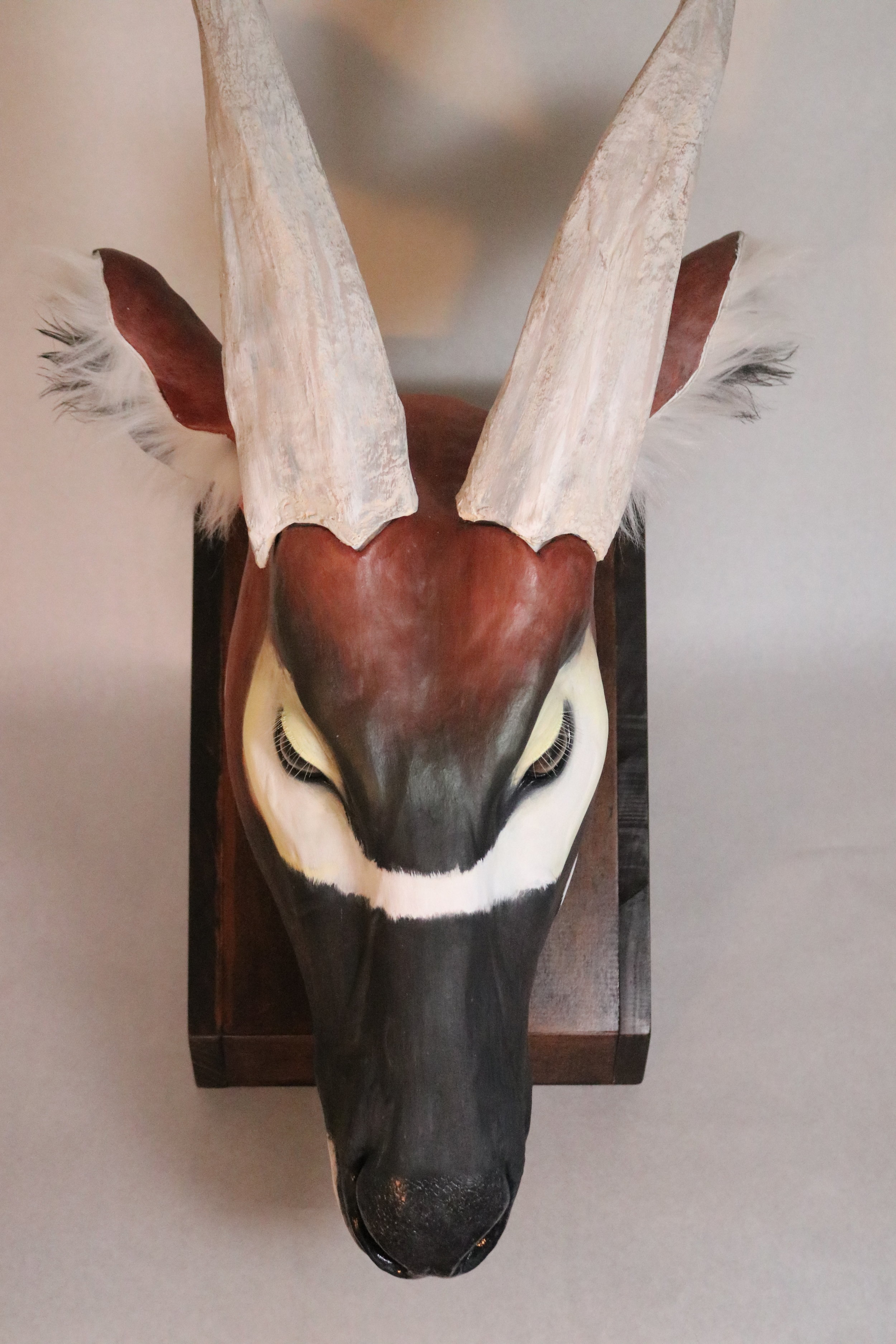
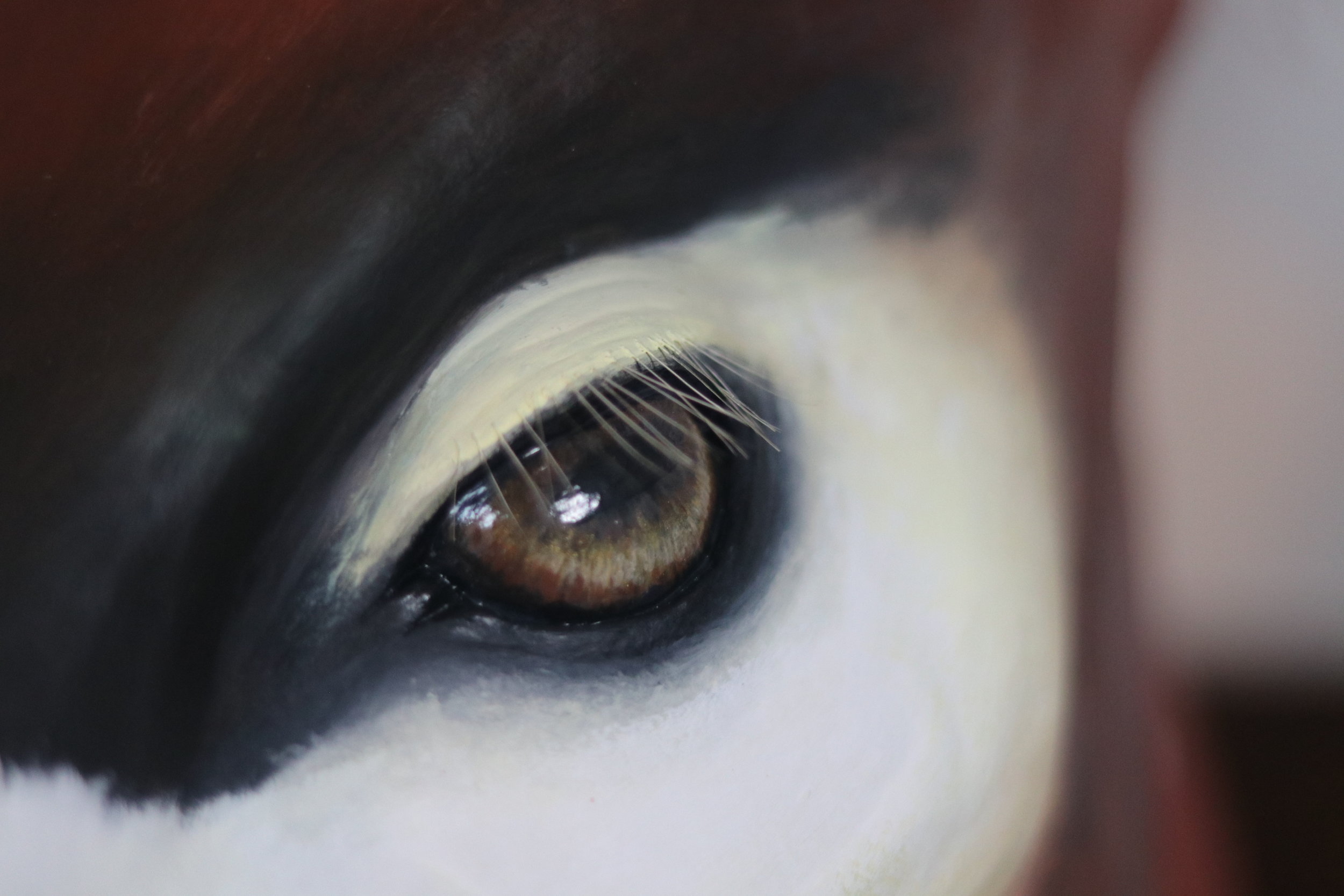
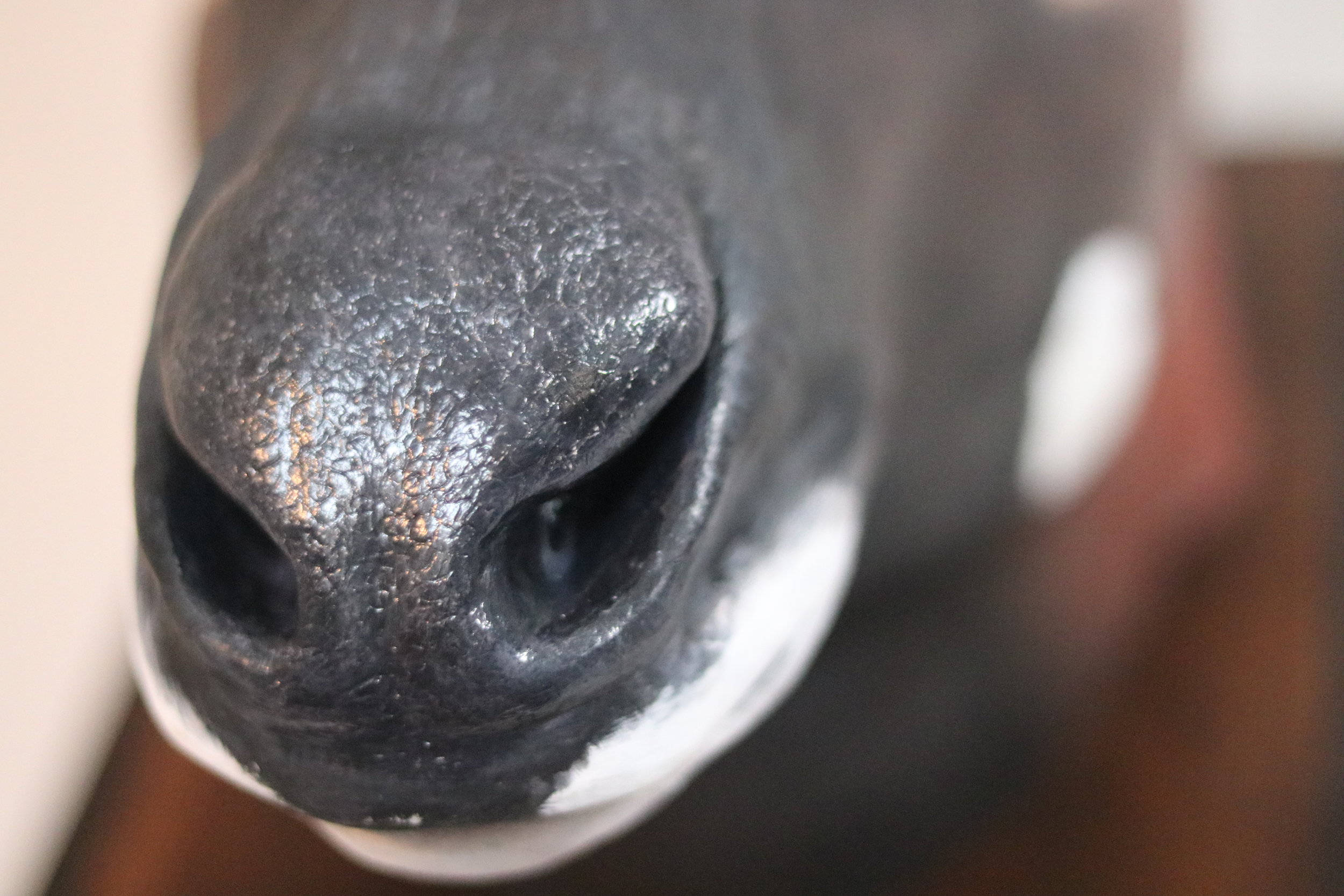
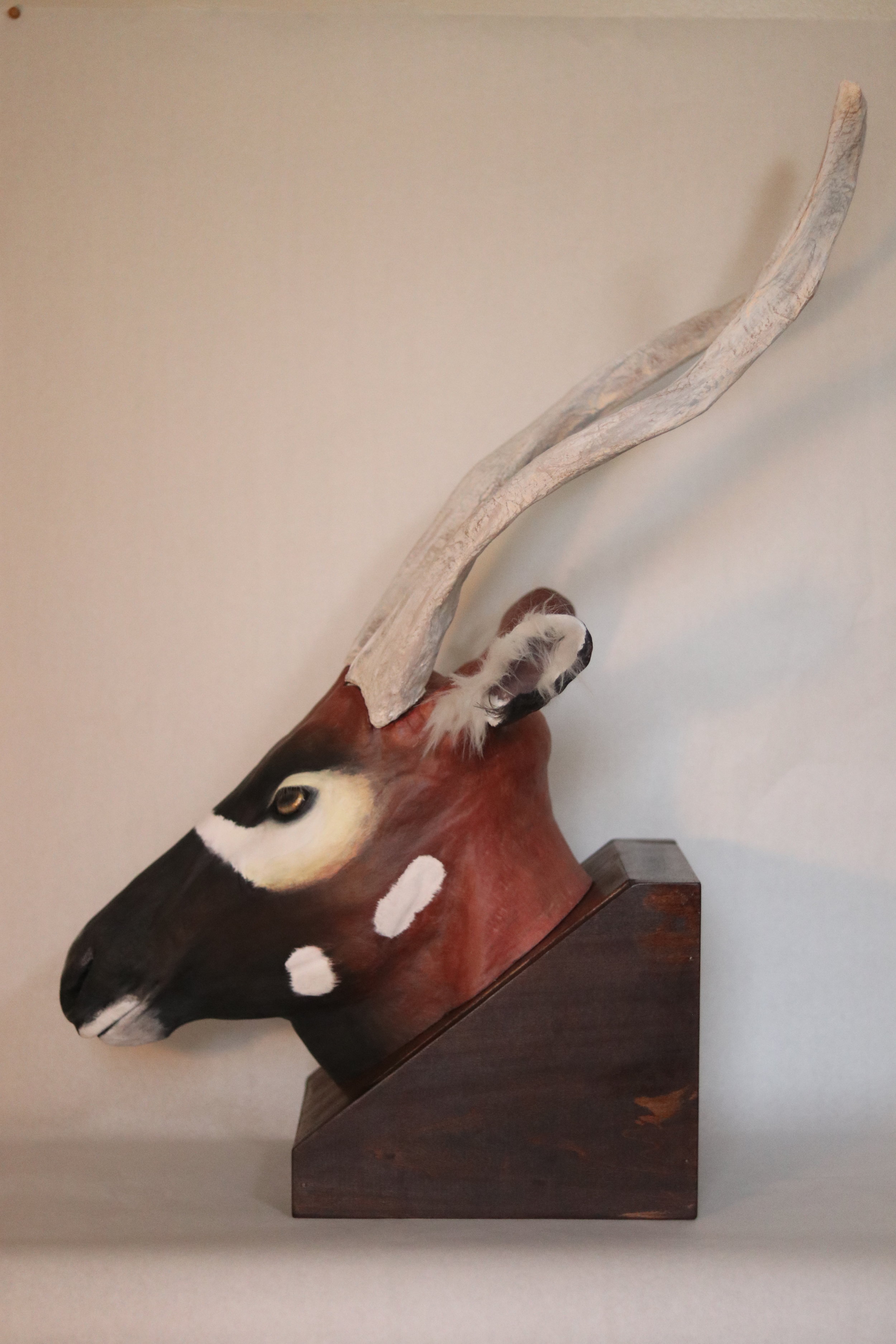
I chose to focus my senior exit on the Bongo because of its visual beauty and status as a critically endangered species. This exhibit is consistent with my past work of natural science topics, and the beginning of educational conservation-based work.
As an artist, I want to inspire viewers to learn about and help protect natural resources and wildlife, and I believe that learning about the Bongo’s endangerment would interest audiences in partaking in conservation efforts. It was important to me to include ways for viewers to learn more about conservation and help, and to encourage sustainable behaviors toward exotic species.
My design and theme was inspired by National Geographic and Zoobooks infographics, which made a strong impression on me as a child and were the foundation for my love for natural science. Like those early magazines, I wanted my posters to include beautiful eye-catching illustrations and a lot of textual information so the viewers left with a much greater knowledge and appreciation of the animal. I want to use my talents and skills to help educate society, particularly young people, about the importance of nature and wildlife and how our actions impact the environment and the wildlife we share it with.
I am grateful for the help of many individuals who volunteered their time and expertise to help me research and create my exhibit: Pamela Robie and Charley Shephard from the Jacksonville Zoo, Darrin Lunde from the National Museum of Natural History Vertebrate Zoology Department, Gene Wright from the University of Georgia Scientific Illustration Department, and Ted Saupe from the University of Georgia Ceramics Department. I would also like to thank my family and friends who encouraged and supported me throughout the semester.
If you want to learn more about the Bongo, conservation efforts, and what you can do to help, visit these sources:
Mount Kenyan Wildlife Conservancy: http://www.animalorphanagekenya.org/what-we-do/wildlife-rehabilitation/
National Geographic: https://blog.nationalgeographic.org/2017/04/08/national-geographic-photo-ark-spotlight-the-elusive-bongo/
African Wildlife Foundation: https://www.awf.org/wildlife-conservation/bongo
Zoo Accreditation and why it matters: https://www.whyanimalsdothething.com/how-to-understand-zoos-accrediation
Research Sources:
IUCN SSC Antelope Specialist Group 2017. Tragelaphus eurycerus ssp. eurycerus. The IUCN Red List of Threatened Species 2017: e.T22058A50197275. http://dx.doi.org/10.2305/IUCN.UK.2017-2.RLTS.T22058A50197275.en.
IUCN SSC Antelope Specialist Group 2017. Tragelaphus eurycerus ssp. isaaci. The IUCN Red List of Threatened Species 2017: e.T22057A50197212. http://dx.doi.org/10.2305/IUCN.UK.2017-2.RLTS.T22057A50197212.en.
“Mammal Species of the World: a taxonomic and geographic reference” edited by Don. E Wilson and DeeAnn M Reeder. Baltimore, Johns Hopkins University Press, 2005
“Handbook of The Mammals of the World, 2. Hoofed Animals,” Editors Don. E Wilson & Russel A Mittermeier, 2011.
“Walker’s Mammals of the World Sixths Edition Volume II,” 1999 John Hopkins University Press




